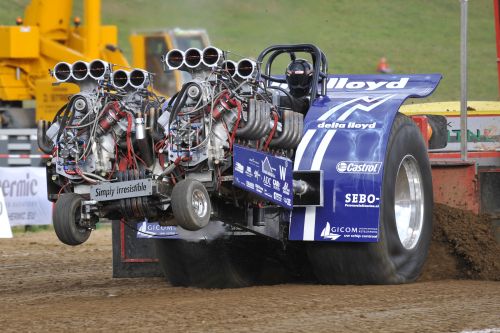Rotella: The world's first ever combined hair oil, foot ointment, and salad dressing
#62
Junior Member
Join Date: Jan 2014
Location: Chambersburg, PA
Posts: 77
Likes: 0
Received 0 Likes
on
0 Posts
Model: Cherokee
My engine builder swears by brad Penn for his dirt racing engines, those guys change it so often I would strain it and put in my vehicles. Looks cool being green/blue anyway and free. Would a higher weight be better for a trail rig since they run hotter? I know race engines they run higher weights
#63
CF Veteran
Join Date: Mar 2013
Location: salem, OR
Posts: 1,023
Likes: 0
Received 0 Likes
on
0 Posts
Year: 1997
Model: Cherokee
Engine: 4.0L
#65
Herp Derp Jerp
Thread Starter
Join Date: Nov 2011
Location: Parham, ON
Posts: 18,251
Likes: 0
Received 12 Likes
on
11 Posts
Year: 1999
Model: Cherokee
Engine: 4.0L OBD-II
My engine builder swears by brad Penn for his dirt racing engines, those guys change it so often I would strain it and put in my vehicles. Looks cool being green/blue anyway and free. Would a higher weight be better for a trail rig since they run hotter? I know race engines they run higher weights
In racing the goal is maximum performance at whatever costs, as long as the engine makes it to the end that's okay. The engine runs mostly full-throttle at very high RPM with very high load for a prolonged time. Engine filtration is not a real concern (look at any racing filter, their efficiency is slightly better than pantyhose and flow is more than the toilet at a curry house), nor are emissions. Racing applications frequently run very very high weights because an HTHS is required to sustain the abuse to the engine. As well, with super stiff springs and such a fast cam, extremely high amounts of zinc are required to withstand the high pressures. Purpose-built racing engines are nothing like a Jeep 4.0L.
Passenger engines are much less stressed internally and longevity is the main factor. Running heavy weights in an engine that is NOT always at maximum load/high RPM can be counter productive as the oil is simply too thick to lubricate well for these lower flow engines. Naturally aspirated production engines like ours will never reach the operating temperatures present in a high performance racing engine... ours are more like "sufficient performance". Damage to bearings is not uncommon with ultra thick oil like racing SAE50 and SAE60-grades.
Trail Jeeps "running hot" has nothing to do with the internal engine temperature like in racing. The increased under hood temperatures from a Jeep crawling along in 4LO are nothing like 175°C oil temperatures racing engines see on a regular basis.
On top of this, the extremely high levels of phosphorous in racing oils are not a good idea to run in any street vehicle as they will kill the catalytic converter pretty fast. Bran Penn's website goes so far as to warn against this exact scenario and recommends against running race oil in a street vehicle. This is of extra damage to 2000+ Jeeps as the PCM uses downstream O2 sensor data in setting the fuel mixture. Brad Penn has another product line specifically for non-racing applications that I think I'll look into adding.
Yessir when I get the time.
Last edited by salad; 02-11-2014 at 12:34 PM.
#67
CF Veteran
Join Date: Dec 2012
Location: York, PA
Posts: 4,169
Likes: 0
Received 6 Likes
on
6 Posts
Year: 1998
Model: Cherokee
Engine: 4.0
On top of this, the extremely high levels of phosphorous in racing oils are not a good idea to run in any street vehicle as they will kill the catalytic converter pretty fast.
#71
CF Veteran
Join Date: Dec 2012
Location: York, PA
Posts: 4,169
Likes: 0
Received 6 Likes
on
6 Posts
Year: 1998
Model: Cherokee
Engine: 4.0
Wondering about this too. I love T6 but don't really wanna run it in the Jeep if its gonna kill my cat fast.
#72
::CF Moderator::
Join Date: Aug 2011
Location: Prescott, Az
Posts: 43,876
Received 1,526 Likes
on
1,238 Posts
Year: 1990
Model: Cherokee (XJ)
Engine: 4.0
Everybody read this link. Didn't include Jeep's Overhead cam version of the original AMC six cylinder.
http://en.wikipedia.org/wiki/AMC_straight-6_engine
http://en.wikipedia.org/wiki/AMC_straight-6_engine
#73
Herp Derp Jerp
Thread Starter
Join Date: Nov 2011
Location: Parham, ON
Posts: 18,251
Likes: 0
Received 12 Likes
on
11 Posts
Year: 1999
Model: Cherokee
Engine: 4.0L OBD-II
bigbadon is correct. Like I put in the writeup, the crankcase is not 100% sealed from the combustion chamber.
A little data for your enjoyment:
Piston-to-Bore Clearance: 0.018 to 0.038 mm (0.0008 to 0.0015 in.)
Ring Gap Clearance—Top Compression Ring: 0.229 to 0.610 mm (0.0090 to 0.0240 in.)
Ring Gap Clearance—2nd Compression Ring: 0.483 to 0.965 mm (0.0190 to 0.0380 in.)
Ring Gap Clearance—Oil Control Steel Rails: 0.254 to 1.500 mm (0.010 to 0.060 in.)
Ring Side Clearance—Compression Rings: 0.042 to 0.084 mm (0.0017 to 0.0033 in.)
Ring Side Clearance—Oil Control Rings: 0.06 to 0.21 mm (0.0024 to 0.0083 in.)
Think about it: If the rings were a perfect seal, the engine would be seized. Some minor clearance between the rings and cylinder walls is required to allow oil to lubricate. On top of this, honing marks in the bore are deliberately put there to act as capillaries for the oil to reach the surface where the rings make contact. This is a trade-off between a perfect seal and not having the engine score itself to death.
Of course on the combustion stroke, the piston moves down and exposes all of the oil still on the cylinder wall. It burns off and leaves via the exhaust valve - which has oil still on the stem that gets heated up and carried away.
At the same time the rings and hone allow oil to lubricate the piston/cylinder surface they also allow an amount of combustion gasses into the crankcase. This is called blowby. Since it is so hot it vaporizes a small amount of oil (see note 1), of course the additives go with the oil too. The CCV system captures these gasses and oil vapors and feeds them back into the engine. (Why do you think the bottom half of everybody's throttle body is black?)
Phosphorous isn't poisonous like "long term smoking kills 1 in 2 people". It's a little more like cleaning up after Chernobyl without wearing any clothes (Emperor's New Hazard Suit). Minor amounts cause damage in as little as 100 hours of operation, long term exposure is the real issue.
Consumption of oil is completely normal during the operation of a healthy engine. The amount is generally not at all noticeable, but still occurs. When the piston-to-bore clearance increases from wear the problems are a little more significant with excessive blow-by, loss of power, and oil consumption bad enough to create visible smoke.
It is inescapable that the catalyst won't last forever. But it's cheaper and easier to replace than the guts of an engine. You still don't want to be doing this every few years or you'll go broke pretty quick (especially in a 2001 XJ meeting CARB requirements).
That said I'll reiterate what I put in my writeup: Using most of the HDEOs, assuming your engine isn't consuming excessive amounts of oil, you should be able to expect catalyst life just as it left the factory, because you are throwing factory-levels of phosphorous at it. If you throw more at it, expect it to last less.
A few articles on this subject since you seem to be interested:
http://www.platinummetalsreview.com/...i1-016-024.pdf
http://ect.jmcatalysts.com/pdfs/2,7%...nd%20boron.pdf
Official SAE and ASTM studies:
1984: http://papers.sae.org/841406/
1992: http://papers.sae.org/920654/
2004: http://papers.sae.org/2004-01-1888/
2005: http://www.astm.org/DIGITAL_LIBRARY/...S/JAI12977.htm
Note 1: API SN specifies a maximum of 15% of oil lost due to evaporation at 250°C using method ASTM D5800, or the Noack test (http://tannasco.com/images/SelbyNoackflyer.pdf). In addition to this, Sequence IIIGB engine test specifies a minimum of only 79% phosphorous retention over a 100-hour testing period:
http://www.swri.org/4org/d08/gastest...ilsacGF5-3.pdf
http://www.swri.org/4org/d08/gastest...ilsacGF5-9.pdf
ftp://ftp.astmtmc.cmu.edu/docs/gas/s...ive/IL08-2.pdf
A little data for your enjoyment:
Piston-to-Bore Clearance: 0.018 to 0.038 mm (0.0008 to 0.0015 in.)
Ring Gap Clearance—Top Compression Ring: 0.229 to 0.610 mm (0.0090 to 0.0240 in.)
Ring Gap Clearance—2nd Compression Ring: 0.483 to 0.965 mm (0.0190 to 0.0380 in.)
Ring Gap Clearance—Oil Control Steel Rails: 0.254 to 1.500 mm (0.010 to 0.060 in.)
Ring Side Clearance—Compression Rings: 0.042 to 0.084 mm (0.0017 to 0.0033 in.)
Ring Side Clearance—Oil Control Rings: 0.06 to 0.21 mm (0.0024 to 0.0083 in.)
Think about it: If the rings were a perfect seal, the engine would be seized. Some minor clearance between the rings and cylinder walls is required to allow oil to lubricate. On top of this, honing marks in the bore are deliberately put there to act as capillaries for the oil to reach the surface where the rings make contact. This is a trade-off between a perfect seal and not having the engine score itself to death.
Of course on the combustion stroke, the piston moves down and exposes all of the oil still on the cylinder wall. It burns off and leaves via the exhaust valve - which has oil still on the stem that gets heated up and carried away.
At the same time the rings and hone allow oil to lubricate the piston/cylinder surface they also allow an amount of combustion gasses into the crankcase. This is called blowby. Since it is so hot it vaporizes a small amount of oil (see note 1), of course the additives go with the oil too. The CCV system captures these gasses and oil vapors and feeds them back into the engine. (Why do you think the bottom half of everybody's throttle body is black?)
Phosphorous isn't poisonous like "long term smoking kills 1 in 2 people". It's a little more like cleaning up after Chernobyl without wearing any clothes (Emperor's New Hazard Suit). Minor amounts cause damage in as little as 100 hours of operation, long term exposure is the real issue.
Consumption of oil is completely normal during the operation of a healthy engine. The amount is generally not at all noticeable, but still occurs. When the piston-to-bore clearance increases from wear the problems are a little more significant with excessive blow-by, loss of power, and oil consumption bad enough to create visible smoke.
It is inescapable that the catalyst won't last forever. But it's cheaper and easier to replace than the guts of an engine. You still don't want to be doing this every few years or you'll go broke pretty quick (especially in a 2001 XJ meeting CARB requirements).
That said I'll reiterate what I put in my writeup: Using most of the HDEOs, assuming your engine isn't consuming excessive amounts of oil, you should be able to expect catalyst life just as it left the factory, because you are throwing factory-levels of phosphorous at it. If you throw more at it, expect it to last less.
A few articles on this subject since you seem to be interested:
http://www.platinummetalsreview.com/...i1-016-024.pdf
http://ect.jmcatalysts.com/pdfs/2,7%...nd%20boron.pdf
Official SAE and ASTM studies:
1984: http://papers.sae.org/841406/
1992: http://papers.sae.org/920654/
2004: http://papers.sae.org/2004-01-1888/
2005: http://www.astm.org/DIGITAL_LIBRARY/...S/JAI12977.htm
Note 1: API SN specifies a maximum of 15% of oil lost due to evaporation at 250°C using method ASTM D5800, or the Noack test (http://tannasco.com/images/SelbyNoackflyer.pdf). In addition to this, Sequence IIIGB engine test specifies a minimum of only 79% phosphorous retention over a 100-hour testing period:
http://www.swri.org/4org/d08/gastest...ilsacGF5-3.pdf
http://www.swri.org/4org/d08/gastest...ilsacGF5-9.pdf
ftp://ftp.astmtmc.cmu.edu/docs/gas/s...ive/IL08-2.pdf
Last edited by salad; 02-11-2014 at 04:19 PM.
#74
Herp Derp Jerp
Thread Starter
Join Date: Nov 2011
Location: Parham, ON
Posts: 18,251
Likes: 0
Received 12 Likes
on
11 Posts
Year: 1999
Model: Cherokee
Engine: 4.0L OBD-II
Everybody read this link. Didn't include Jeep's Overhead cam version of the original AMC six cylinder.
http://en.wikipedia.org/wiki/AMC_straight-6_engine
http://en.wikipedia.org/wiki/AMC_straight-6_engine

#75
::CF Moderator::
Join Date: Aug 2011
Location: Prescott, Az
Posts: 43,876
Received 1,526 Likes
on
1,238 Posts
Year: 1990
Model: Cherokee (XJ)
Engine: 4.0



